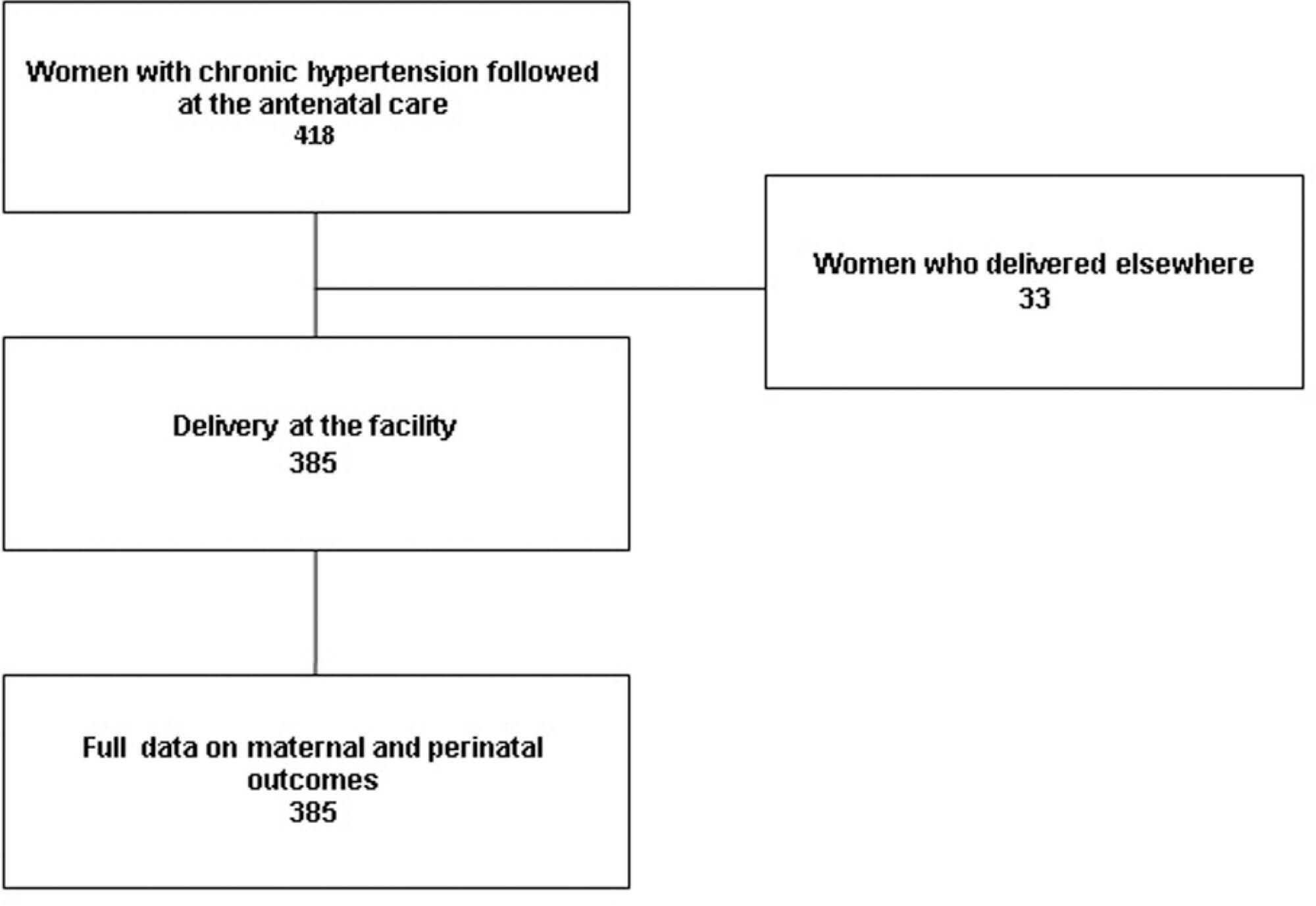Summary
Revista Brasileira de Ginecologia e Obstetrícia. 2020;42(6):340-348
To evaluate the performance of the hybrid capture 2 (HC2) high-risk papillomavirus (hrHPV) assay and cytological test in women with previous abnormalities, to detect cervical intraepithelial neoplasia grade 2 or worse (≥ CIN 2).
A cytological test and HC2 (Qiagen, Gaithersburg, Maryland, EUA) for hrHPV were conducted in 359 liquid-based (Sure Path, Becton Dickinson, TriPath Imaging, Burlington, NC, USA) samples collected from women from the Vale do Ribeira Region, during July 2013 and September 2015 with previous cytology classified as atypical squamous cells of undetermined significance (ASC-US), low-grade squamous intraepithelial lesion (LSIL), atypical squamous cells, cannot exclude high-grade squamous intraepithelial lesions (ASC-H), and atypical glandular cells (AGC). The histopathological examination was conducted in 179 women. The performance evaluations were calculated using the “exact” Clopper-Pearson 95% confidence interval (CI) test by MEDCALC (Medcalc Software Ltd, Ostend, Belgium).
The ≥ CIN 2 frequency was 11.7% (21/179). The HC2 for hrHPV and repeat cytology to detect ≥ CIN 2 obtained, respectively, a sensitivity of 90.5% (95% CI = 69.6-98.8) and 90.5%, (95%CI = 69.6-98.8), a specificity of 65.8% (95% CI = 57.9-73.2) and 43.7% (95%CI = 35.8-51.8), a positive predictive value of 26.0% (95% CI = 21.4-31.3) and 17.6%, (95%CI = 14.9-20.6), and a negative predictive value of 98.1% (95%CI = 93.3-99.5) and 97.2% (95% CI = 90.1-99.2).
Hybrid capture 2 for hrHPV improves the performance of the detection of ≥ CIN 2, without compromising sensitivity, and provides a greater safety margin to return to the triennial screening of women undergoing follow-up due to previous abnormalities, without underlying ≥ CIN 2.
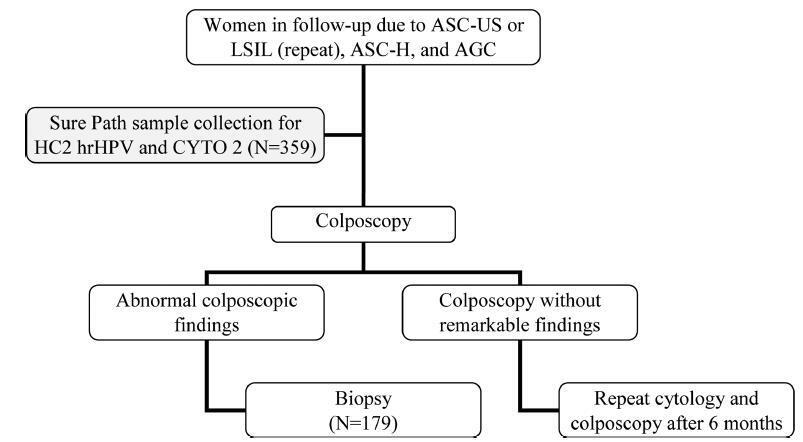
Summary
Revista Brasileira de Ginecologia e Obstetrícia. 2020;42(6):333-339
Sexual function is a multidimensional phenomenon that is affected by many biological and psychological factors. Cognitive-behavioral sex therapies are among themost common nonpharmacological approaches to psychosexual problems. The purpose of the present study was to investigate the effectiveness of psychoeducational and cognitive-behavioral counseling on female sexual dysfunction.
The present study was a clinical trial with intervention and control groups. The study population consisted of women referring to the general clinic of a governmental hospital in Iran. After completing the demographic questionnaire and Female Sexual Function Index (FSFI), those who obtained the cutoff score ≤ 28 were contacted and invited to participate in the study. Convenience sampling method was used and 35 subjects were randomly allocated for each group. Eight counseling sessions were held for the intervention group (two/week/1.5 hour). Post-test was taken from both groups after 1 month, and the results were statistically analyzed by PASW Statistics for Windows, Version 18 (SPSS Inc., Chicago, IL, USA).
The total mean scores of FSFI and the subscales of sexual desire, arousal, orgasm, and satisfaction were significantly higher in the intervention group than in the control group after the intervention. In addition, postintervention pain mean scores in the intervention group were significantly lower than in the control group (p < 0.05).
The results of the present study indicate that psychoeducational cognitive- behavioral counseling is effective in improving female sexual function. It is recommended to compare the effects of psychoeducational cognitive-behavioral counseling on sexual dysfunctions of couples and with a larger sample size in future research.
Summary
Revista Brasileira de Ginecologia e Obstetrícia. 2020;42(6):325-332
To evaluate the insertion of the hysteroscopic intratubal sterilization device for female sterilization concerning the technique and the feasibility.
Retrospective study with data collection of medical records of 904 patients who underwent device insertion between January and September 2016 in a public hospital in Rio de Janeiro (Brazil) with data analysis and descriptive statistics.
In 85.8% of the cases, the uterine cavity was normal, and themost commonlydescribed findings upon hysteroscopy were synechiae (9.5%). The procedure lasted an average of 3.56minutes (range: 1 to 10minutes), and the pain was considered inexistent or mild in 58,6% of the cases, mild or moderate in 32,8%, and severe or agonizing in less than 1% (0.8%) of the cases, based on a verbal scale ranging from 0 to 10. The rate of successful insertions was of 85.0%, and successful tubal placement was achieved in 99.5% of the cases. There were no severe complications related to the procedure, but transient vasovagal reactions occurred in 5 women (0.6%).
Female sterilization performed by hysteroscopy is a safe, feasible, fast, and well-tolerated procedure. The rates of successful insertions and tubal placements were high. There were few and mild adverse effects during the procedure, and there were no severe complications on the short term.
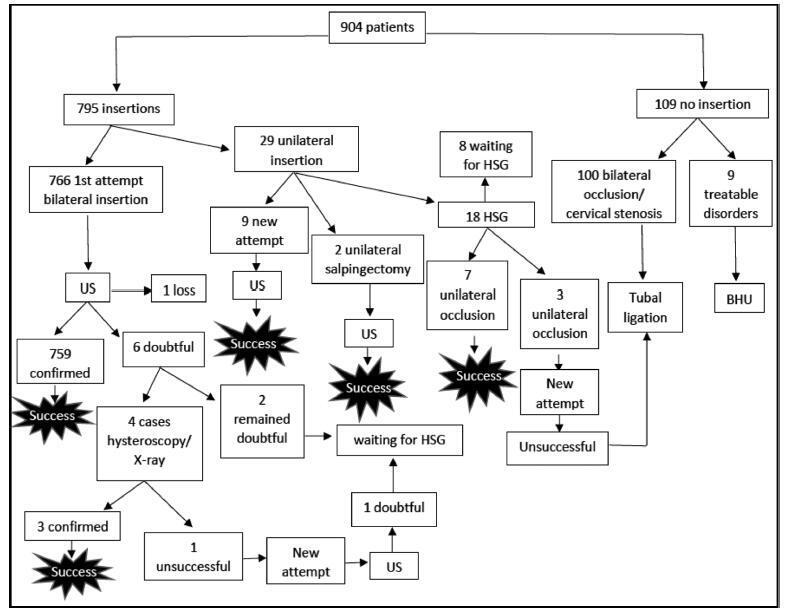
Summary
Revista Brasileira de Ginecologia e Obstetrícia. 2020;42(6):310-315
The Robson 10 group classification system (RTGCS) is a reproducible, clinically relevant and prospective classification system proposed by the World Health Organization (WHO) as a global standard for assessing, monitoring and comparing cesarean section (CS) rates. The purpose of the present study is to analyze CS rates according to the RTGCS over a 3-year period and to identify the main contributors to this rate.
We reviewed data regarding deliveries performed from 2014 up to 2016 in a tertiary hospital in Portugal, and classified all women according to the RTGCS. We analyzed the CS rate in each group.
We included data from 6,369 deliveries. Groups 1 (n = 1,703), 2 (n = 1,229) and 3 (n = 1,382) represented 67.7% of the obstetric population. The global CS rate was 25% (n = 1,594). Groups 1, 2, 5 and 10 were responsible for 74.2% of global CS deliveries.
As expected, Groups 1, 2, 5 and 10 were the greatest contributors to the overall CS rate. An attempt to increase the number of vaginal deliveries in these groups, especially in Groups 2 and 5, might contribute to the reduction of the CS rate.
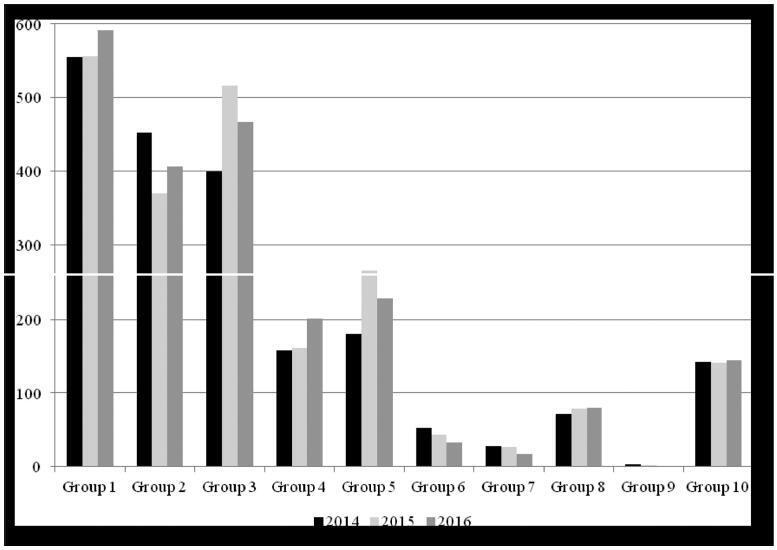
Summary
Revista Brasileira de Ginecologia e Obstetrícia. 2020;42(5):255-265
The optimal use of contraceptive methods requires that women participate in targeted choice of methods that meet their individual needs and expectations. The Thinking About Needs in Contraception (TANCO) study is a quantitative online survey of the views of health professionals and women on aspects of contraceptive counseling and contraceptive use.
Physicians and women attending clinics for contraception were invited to complete online questionnaires. The research explored the knowledge and use of contraceptive methods, satisfaction with the current method and interest in receiving more information on all methods. Aspects related to contraceptive practice among physicians were gathered in parallel. The results obtained in the Brazilian research were compared with those of the European research, which involved 11 countries.
There was a high prevalence of contraceptive use and general satisfaction with the current method. A total of 63% of the women were using short-acting contraceptive (SAC) methods, and 9% were using a long-acting reversible contraceptive (LARC). Sixty-six percent of women were interested in receiving more information on all methods; 69% of women said they would consider LARC if they received more comprehensive information about it. Health professionals tend to underestimate the interest of women in receiving information about contraception in general, and more specifically about LARCs.
Despite the high levels of use and satisfaction with the current methods, women were interested in receiving more information on all contraceptive methods. Structured contraceptive counseling based on individual needs and expectations may lead to greater knowledge and a greater likelihood of proper contraceptive choice.

Summary
Revista Brasileira de Ginecologia e Obstetrícia. 2020;42(5):266-271
To observe if the histopathological result of a conization performed after cervical adenocarcinoma in situ diagnosis is compatible with the histopathological analysis of a subsequent hysterectomy.
The present descriptive and observational research consisted of the analysis of the medical records of 42 patients who were diagnosed with in situ adenocarcinoma postconization. The analysis consisted of whether there was compatibility between the histopathological reports of conization and hysterectomy and if there was an association between adenocarcinoma in situ and another neoplasia (squamous disease). Interpretation of any immunohistochemistry reports obtained was also performed. In addition, clinical and epidemiological data were also analyzed.
A total of 42 conizations were performed, 33 (79%) were cold knife conizations and 9 (21%) were loop electrosurgical excision procedures (LEEPs). Of the patients analyzed, 5 (10%) chose not to undergo subsequent hysterectomy to preserve fertility or were < 25 years old. Out of the 37 patients with adenocarcinoma in situ who underwent subsequent hysterectomy, 6 (16%) presented with residual disease. This findingprovedincompatiblewiththe finding of the conizations, which had ruled out invasive cancer.
The prevalence of adenocarcinoma in situ increased in the past years. There is still a large part of the medical literature that advocates the use of conservative treatment for this disease, even though it is common knowledge that it is a multifocal disease. However, the majority of studies advocate that hysterectomy should remain the preferred treatment for women who have already completed their reproductive purpose.
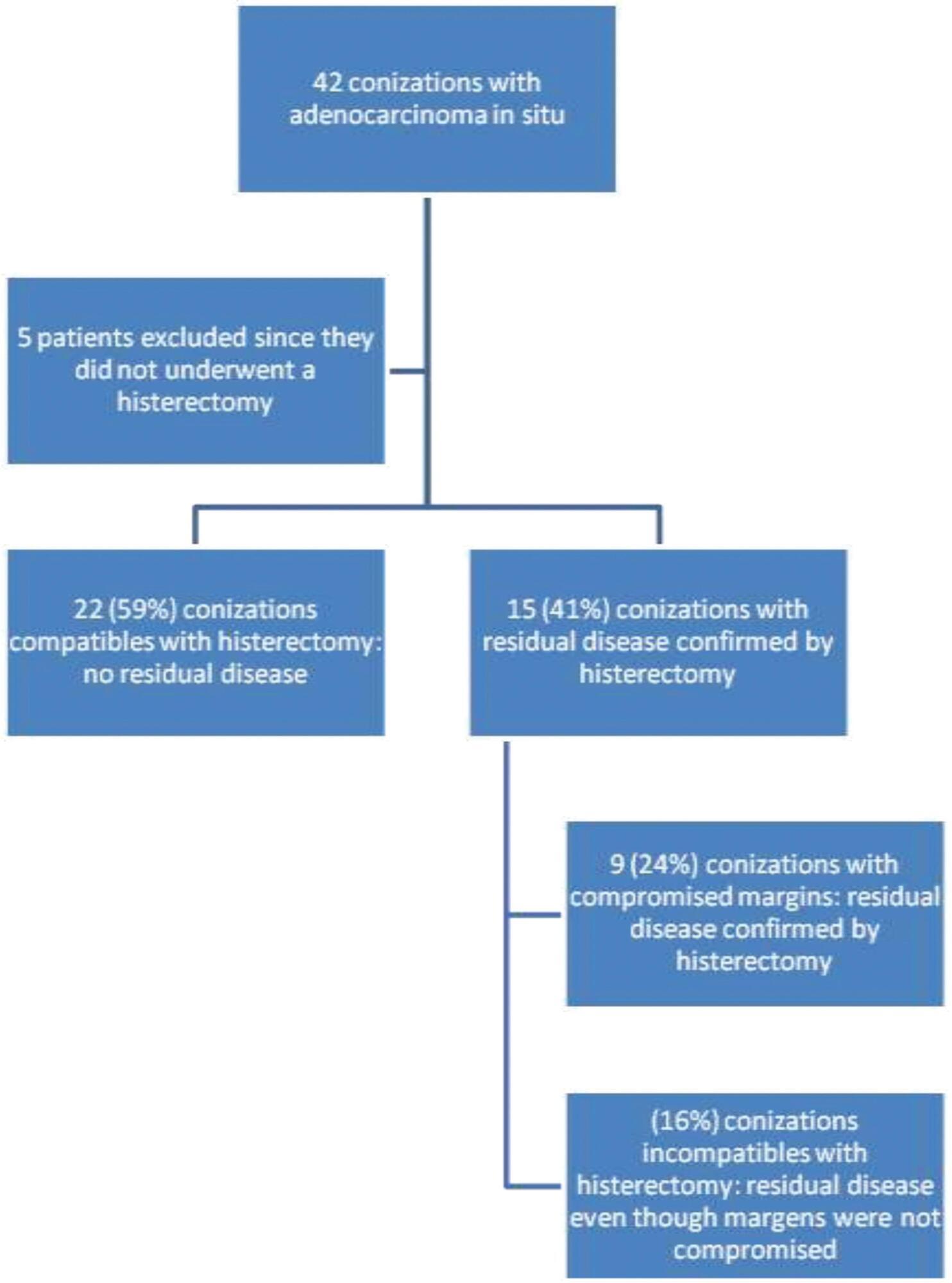
Summary
Revista Brasileira de Ginecologia e Obstetrícia. 2020;42(5):248-254
To assess maternal and perinatal outcomes of pregnancies in women with chronic hypertension (CH). Methods Retrospective cohort of women with CH followed at a referral center for a 5 year period (2012-2017). Data were obtained from medical charts review and described as means and frequencies, and a Poisson regression was performed to identify factors independently associated to the occurrence of superimposed preeclampsia (sPE).
A total of 385 women were included in the present study; the majority were > than 30 years old, multiparous, mostly white and obese before pregnancy. One third had pre-eclampsia (PE) in a previous pregnancy and 17% of them had organ damage associated with hypertension, mainly kidney dysfunction. A total of 85% of the patients used aspirin and calcium carbonate for pre-eclampsia prophylaxis and our frequency of sPE was 40%, with an early onset (32.98 ± 6.14 weeks). Of those, 40% had severe features of PE, including 5 cases of HELLP syndrome; however, no cases of eclampsia or maternal death were reported. C-section incidence was high, gestational age at birth was 36 weeks, and nearly a third (115 cases) of newborns had complications at birth One third of the women remained using antihypertensive drugs after pregnancy.
Chronic hypertension is related with the high occurrence of PE, C-sections, prematurity and neonatal complications. Close surveillance and multidisciplinary care are important for early diagnosis of complications.
